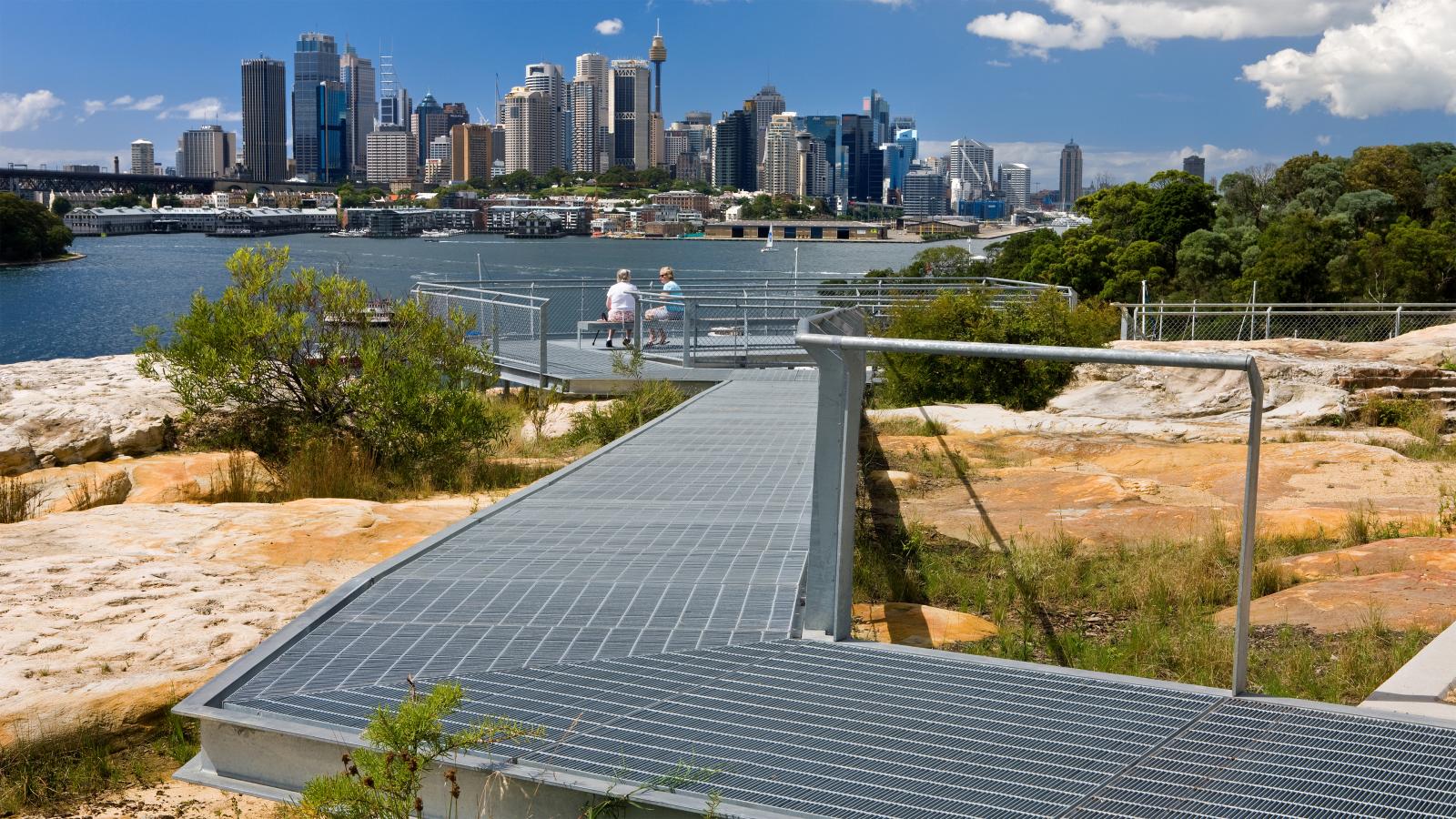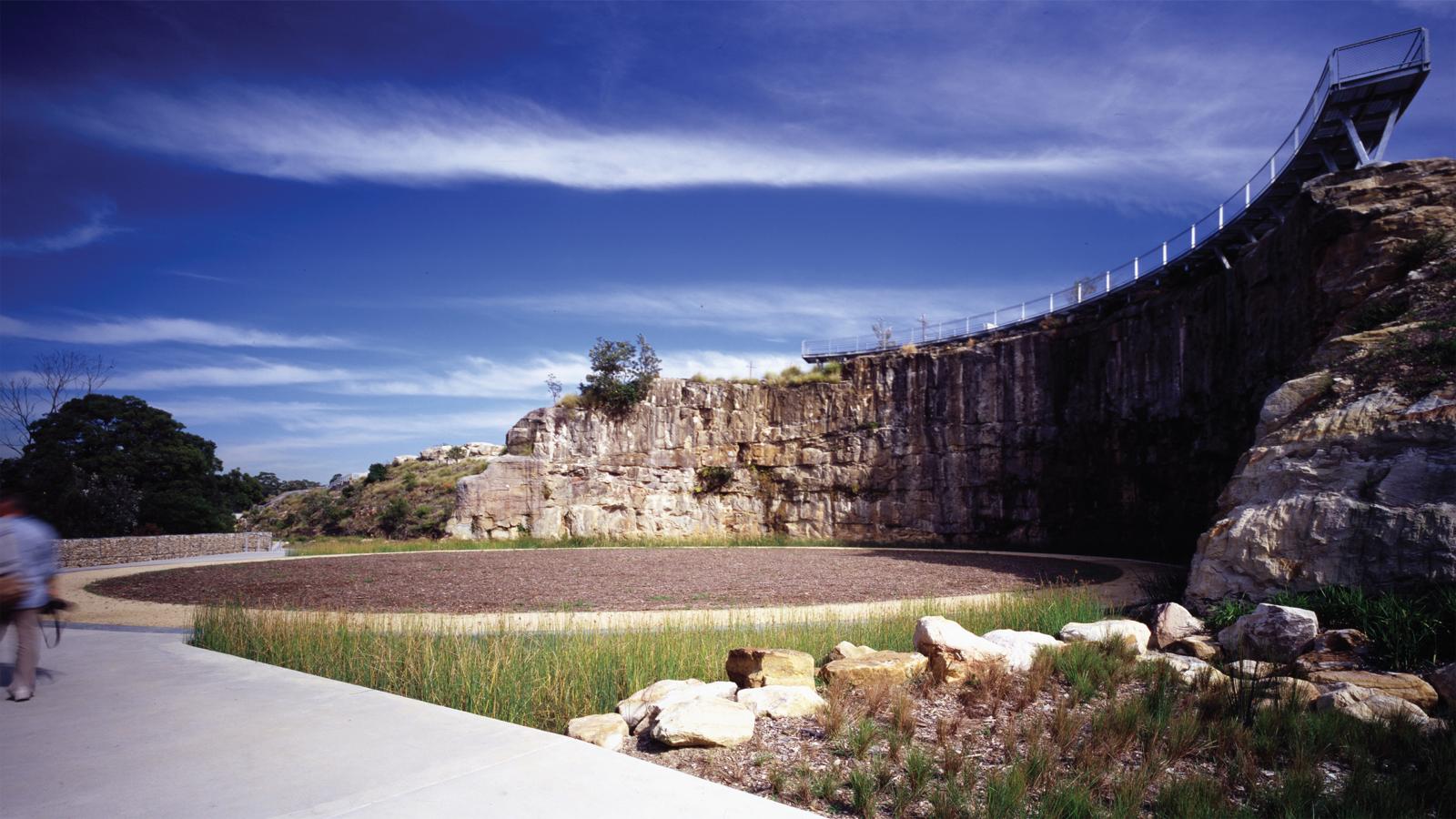Sep 01 2020, by Fleetwood Urban (Marketing)
Former BP Terminal
Where? Waverton Peninsula
Design Team? McGregor Coxall
Client? North Sydney Council
Opened? 2005
Between 1920 and 1996, Waverton Peninsula was home to one of the largest fuel-processing facilities anywhere in Australia. That all changed in the early 2000s, thanks to a game-changing renewal project led by Philip Coxall. In addition to transforming the former BP industrial site into a sweeping public open space overlooking Sydney Harbour, it also helped to transform the fortunes of the business he continues to co-own with Adrian McGregor; McGregor Coxall.
Project Outline:
Opening shortly after WW1, the eastern side of Sydney’s Waverton Peninsula served as a commercial fuel storage facility until it was decommissioned and partially-demolished in 1996. Unsurprisingly given its high-profile location, the NSW Government quickly set about plans to regenerate the harbourside site into a Public Open Space. A glittering multi-million dollar masterplan was created, only for State funding to be subsequently pulled in the early 2000s, leaving North Sydney Council to pick up the pieces.
Enter a young (and still largely obscure) landscape architecture practice, McGregor Coxall. Led by Philip Coxall, the significantly-reduced budget demanded fresh thinking and inspired an approach that would go on to revolutionise the way materials were used and specified on urban renewal projects right across Australia. Completed with much fanfare in 2005, the multi award-winning park features the extensive use of concrete, galvanised steel and wire fencing with its zig-zagging network of walkways, stairs and viewing decks framing the dramatic sandstone cliffs.


Project Insights:
1 – The BP terminal project was a watershed moment for McGregor Coxall, but also for the industry, challenging conventional thinking around materiality.
Philip Coxall: “The project won a lot of awards and it really took us from a nobody in the business to ‘Oh wow, who are those guys?’ It introduced a lot of different materials like concrete, galvanised steel and even chain-link fencing. It’s funny, my father was a metal worker and I told him I was using all this galvanised steel on the project. He said ‘son, don’t be stupid. You don’t use gal on the foreshore or it’ll rust like anything’. Obviously, I didn’t listen to him. It’s now recognised in the industry as being quite a moment.”

2 – McGregor Coxall won the tender by ‘lowballing’ everyone else – unintentionally.
Philip Coxall: “As soon as I finished my landscape architecture course in Canberra, I travelled and worked overseas for about 14 years. When I came back, I joined up with Adrian, my business partner at McGregor Coxall. At first, I was mostly just working on site, but one day Adrian said ‘if you want to be part of the business, you’re going to have to go and win some work.’ He showed me a tender in the Tuesday paper, calling for landscape architects to design a park at an old petroleum storage facility on Sydney Harbour. I went out there and I didn’t really have a clue as I met the client and all these other industry professionals. We put in our tender and a while later Adrian called me up and he said ‘I’ve got some good news, we won the BP project’. Then he said ‘but we’ve also got some bad news.’ Apparently, we won abecause we were $45,000 cheaper than anyone else. They probably all thought ‘That prick! He’s done us all over!’ But I absolutely didn’t do it on purpose. It just shows how fate can step in.”

3 – Adversity leads to wonderful opportunity.
Philip Coxall: “The original project masterplan was designed by one of the leading global procurement-based practices. It was decked out beautifully with all this pristine décor and it talked about sailing boats and all this wonderful stuff close to the harbour. The only problem was, as they started to build it, the State Government pulled out a lot of the money. Bottom line, North Sydney Council needed us to deliver it for half the original price. But it was actually perfect for me, because great design often comes from the challenge of wrestling with constraints. For example, it gave us the chance to introduce concrete as the key material which wasn’t really used in landscaping. We were able to use and recycle all of these pragmatic materials, and then use little details to help elevate the final design to another level. Coming from a background growing up in Auburn around all the oil refineries and heavy industry, I was re-interpreting my own story back into the site in many ways.”

4 – Sister projects on opposite sides of Sydney Harbour.
Philip Coxall: “During the BP project, I’d sometimes go and sit on the headland at lunchtime and look out across the Sydney Harbour – pretty much directly at Ballast Point. At that stage Ballast Point was still being used for storing oil, but I’d read they were going to turn it into a park and I thought, ‘wow, the lucky bastard who gets that project, can you imagine how good it would be to get Ballast Point? Surely we couldn’t get that one as well?’ But a few years later we did, largely because of our work at the BP site. The two projects will always be closely connected, they really were the benchmarks for the practice, they established who we are.”

*The images used in this article have been taken from Fleetwood Urban and McGregor Coxall’s collectionsa*The images used in this article have been taken from McGregor Coxall’s collections



